Resettlement is a refugee’s last option for safety.
- The definition of a refugee is someone who has fled their country due to persecution based on their ethnicity, nationality, religion, political opinion, or social group.
- Resettlement is the last resort, when refugees cannot safely return to their home country and when they cannot safely remain in the country to which they initially fled.
- Fewer than 1% of refugees will ever be resettled to a third country.
The U.S. Refugee Admissions Program is secure.
- Resettlement is the most difficult way to enter the U.S., and refugees are the most thoroughly vetted individuals in the U.S., going through all screenings before they arrive.
- Vetting includes biometric and biographic checks; interagency intelligence sharing; screenings against multiple domestic and international terrorist and criminal databases; background investigations by the FBI, Department of Defense, State Department, and National Counterterrorism Center; and in-person interviews by Homeland Security officers.
Refugees give back to their new communities
- Refugees are resilient, hard workers who pay taxes, start businesses, purchase homes, revitalize towns, and become U.S. citizens.
- The average workforce participation rate of refugees is 81.8%, above the national average.
- Many industries, like hospitality and meatpacking, rely on refugee workers.
- Multiple studies demonstrate that refugees are economic contributors and job creators.
- Information about resettlement by state and compiled stories of welcome by state.
Faith communities built refugee resettlement in the United States.
- Even before Congress enacted the Refugee Act of 1980, religious communities across the United States built what we know today as the U.S. Refugee Admissions Program, welcoming refugees from World War II, the Vietnam War, the Cold War, the Rwandan genocide, and the Syrian refugee crisis.
- Faith communities are still deeply involved in refugee resettlement. Volunteers, community groups, and religious congregations across the U.S. continue to help refugees start their lives anew.
- Refugee resettlement is a public-private partnership between the federal government, state and local governments, local non-profit organizations, and volunteers that provide refugees with the tools of self-reliance: housing, community orientation, English-language classes, and job placement.
The U.S. has recently cut refugee admissions by 80%, setting a new historic low.
- Since the program’s inception, the U.S. has set an average annual refugee admissions goal of 95,000 and resettled an average of 80,000 refugees per year.
- The Trump administration has cut this number to 18,000 in FY20 – an all-time low.
- Due to reduced admissions, refugees approved for resettlement years ago are languishing in camps and urban situations, still waiting for safety and reunification with loved ones.
There is strong bipartisan support for returning resettlement to historic norms.
- Two recent bipartisan letters from Senators, led by Senators Lankford and Coons, and Representatives, led by the bipartisan Congressional Refugee Caucus, illustrate support for the resettlement program.
Additional Resources:
Bipartisan Support
Economic Contributions
- Fiscal Policy Institute
- National Bureau of Economic Research
- New American Economy (state data appendix on pg 29)
- Economic impact of refugees State by State
Military, Faith & Community Support
- Map of support for refugee resettlement
- Refugee resettlement State by State
- Support for refugee resettlement State by State
- Letter signed by 27 retired generals & admirals & WSJ article
- Gen. Hayden and Gen. Stavridis Op-Ed
- Letter from 500+ Religious Leaders & Faith Groups
- Religious freedom Letter & U.S. Committee for International Religious Freedom
- Letter from Over 1,300 Faith Leaders and Community Sponsors
Foreign Policy

